Surveying for Coho in the Mid Klamath
Lauren Zygmont, MKWC Fisheries Field Technician, with a Coho carcass.
Each winter MKWC participates in a multi-organizational effort to monitor how many adult Coho salmon, ”achvuun” in the Karuk language, return to the Klamath Basin to spawn. From November through January survey crews are in the field, walking and diving the streams to document adult fish, redds, and carcass counts and collect carcass samples for laboratory analysis. Data collected during Coho spawner surveys informs fisheries restoration projects in the watershed, helping to determine priority locations for restoration and documenting the effectiveness of completed projects.
Coho salmon spawning runs are at their peak in the heart of winter. Coho prefer to spawn in smaller streams and tributaries which are often made inaccessible by low water flows until the first real precipitation arrives. Surveyors from the Mid Klamath Watershed Council, the Karuk Tribal DNR Fisheries Program, the California Department of Fish and Wildlife, and the U.S. Forest Service don drysuits (with many warm layers underneath) and felt-soled boots to keep from slipping as they navigate the rushing water and often icy or snowy streams. Only a surveyor’s head and hands remain outside the drysuit and these are covered by neoprene gloves and a hood for warmth, topped with a mask and snorkel. Each crew carries a dry bag with all the gear they’ll need to conduct their survey safely and successfully.
A survey crew of 2 or 3 people walks along a designated reach of the stream, looking for fish, redds, and carcasses. They will snorkel through deep pools, peering beneath the woody debris jams and undercut boulders or root wads that are the Coho’s preferred habitat. When a redd is identified, the GPS location is recorded, as well as information about the size of the redd, the habitat it’s in, and the presence or absence of live adult fish. Flagging will be tied to a twig or branch near the redd to identify it as having already been documented when subsequent survey crews encounter it. Surveyors attempt to retrieve samples of scales, tissue, otoliths (tiny, teardrop-shaped, inner ear bones that can provide a wealth of information through lab analysis), and a portion of the gut from each carcass they find. They also make note of the carcass’ length, sex, spawning status, and if it’s marked as hatchery originated. Each carcass is scanned for the presence of a passive integrated transponder (PIT) tag, a rice grain sized tracking device that may have been implanted by these same and other surveying agencies when the fish was just a juvenile. As the survey continues, crews are also looking for the presence of juvenile Coho, recording air and water temperatures and making general observations regarding stream conditions. They must maintain a high level of situational awareness; keeping an eye out for hazards underfoot (like a loose or slippery rock), overhead (like a dead tree or broken limb), and out in front of them (like a bear in the stream looking for a fish to eat).
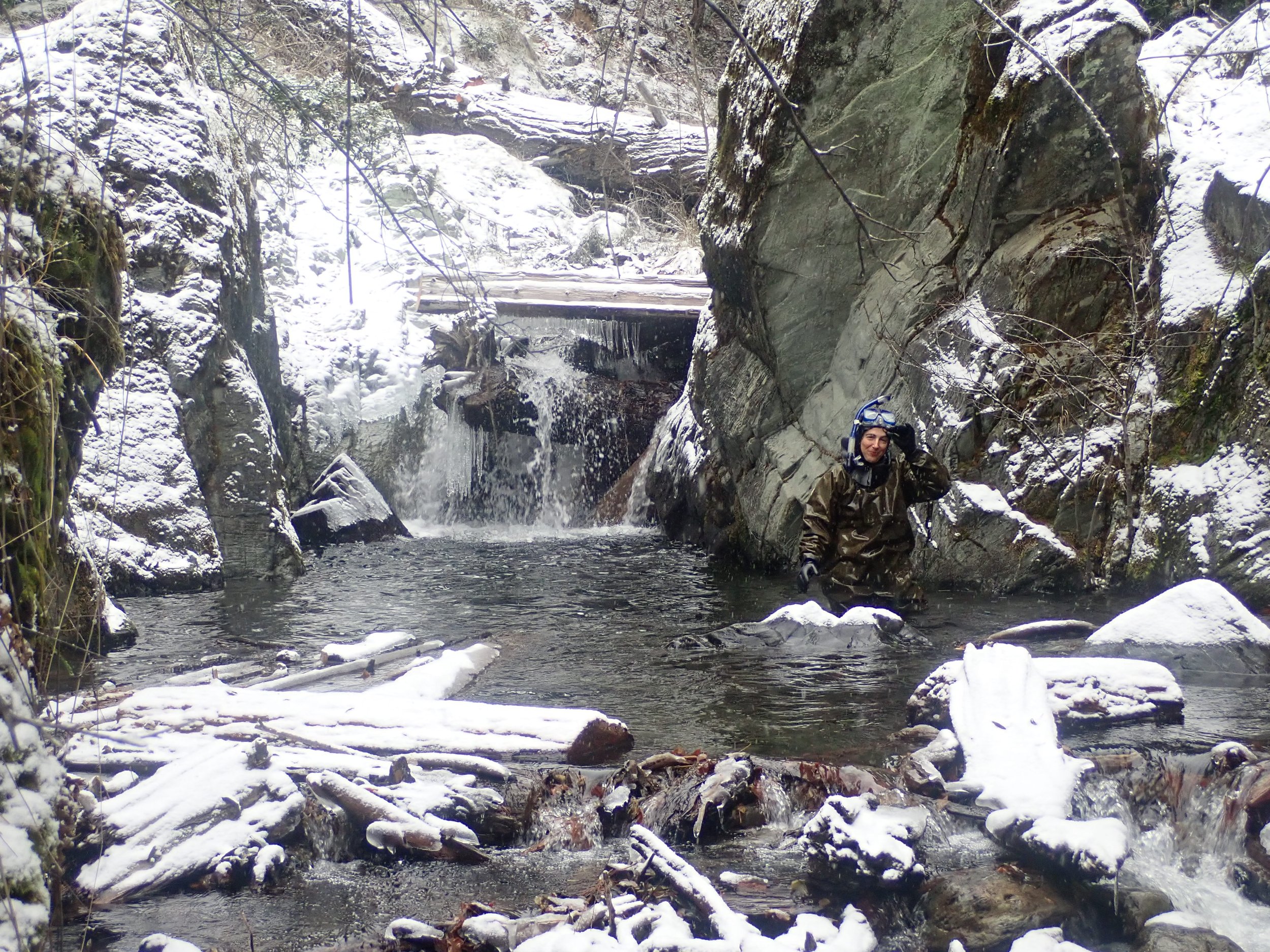
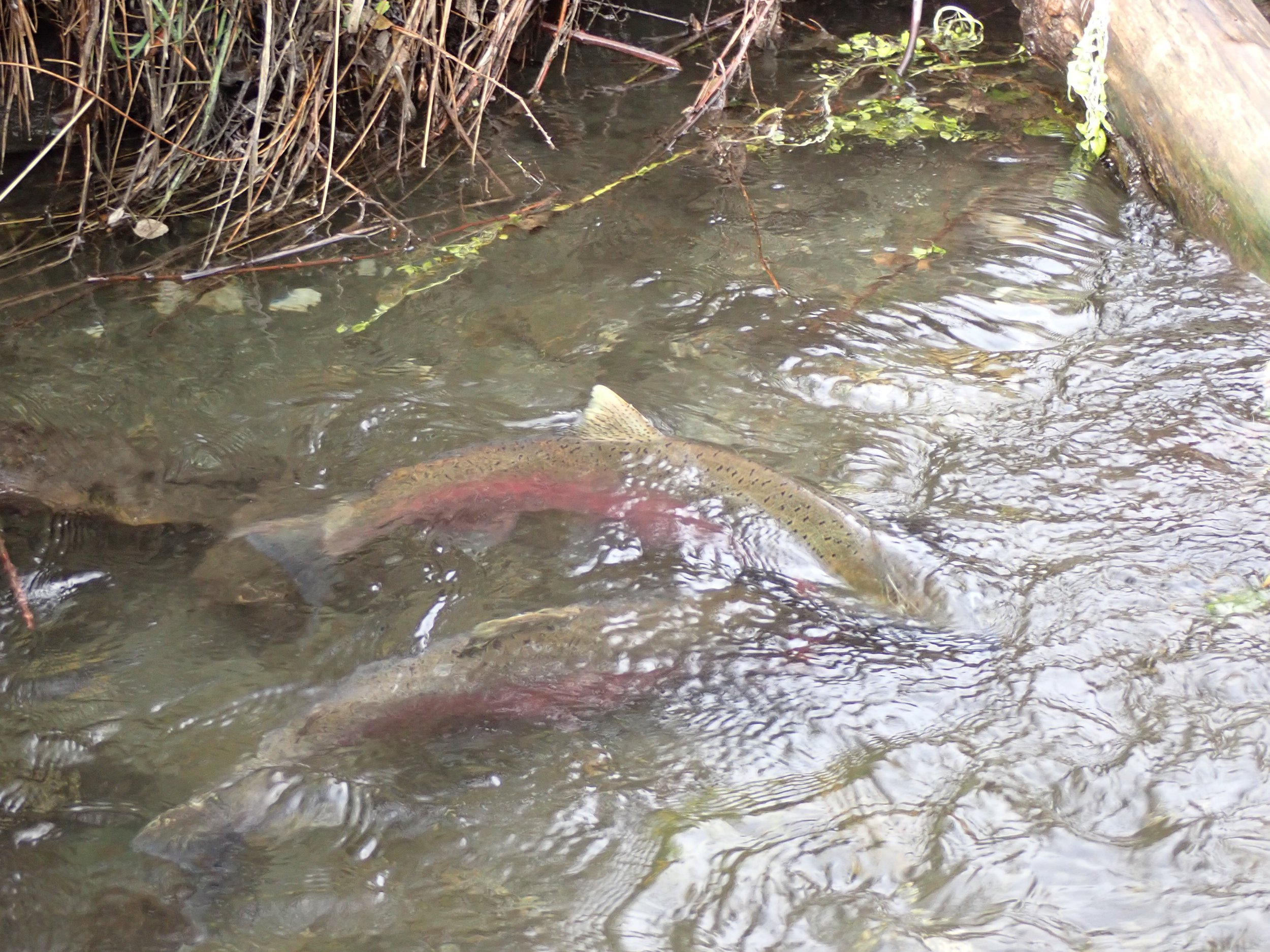
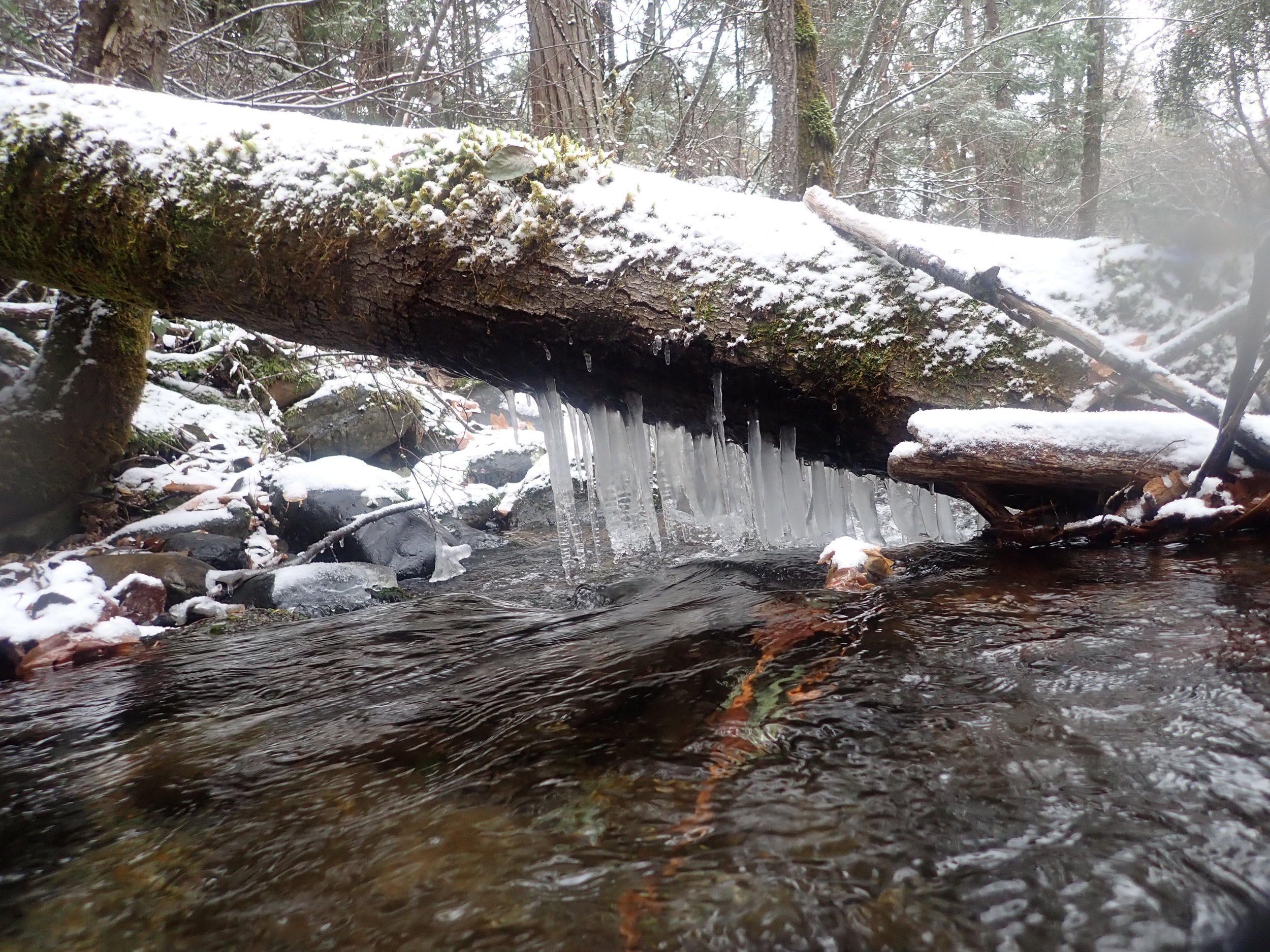
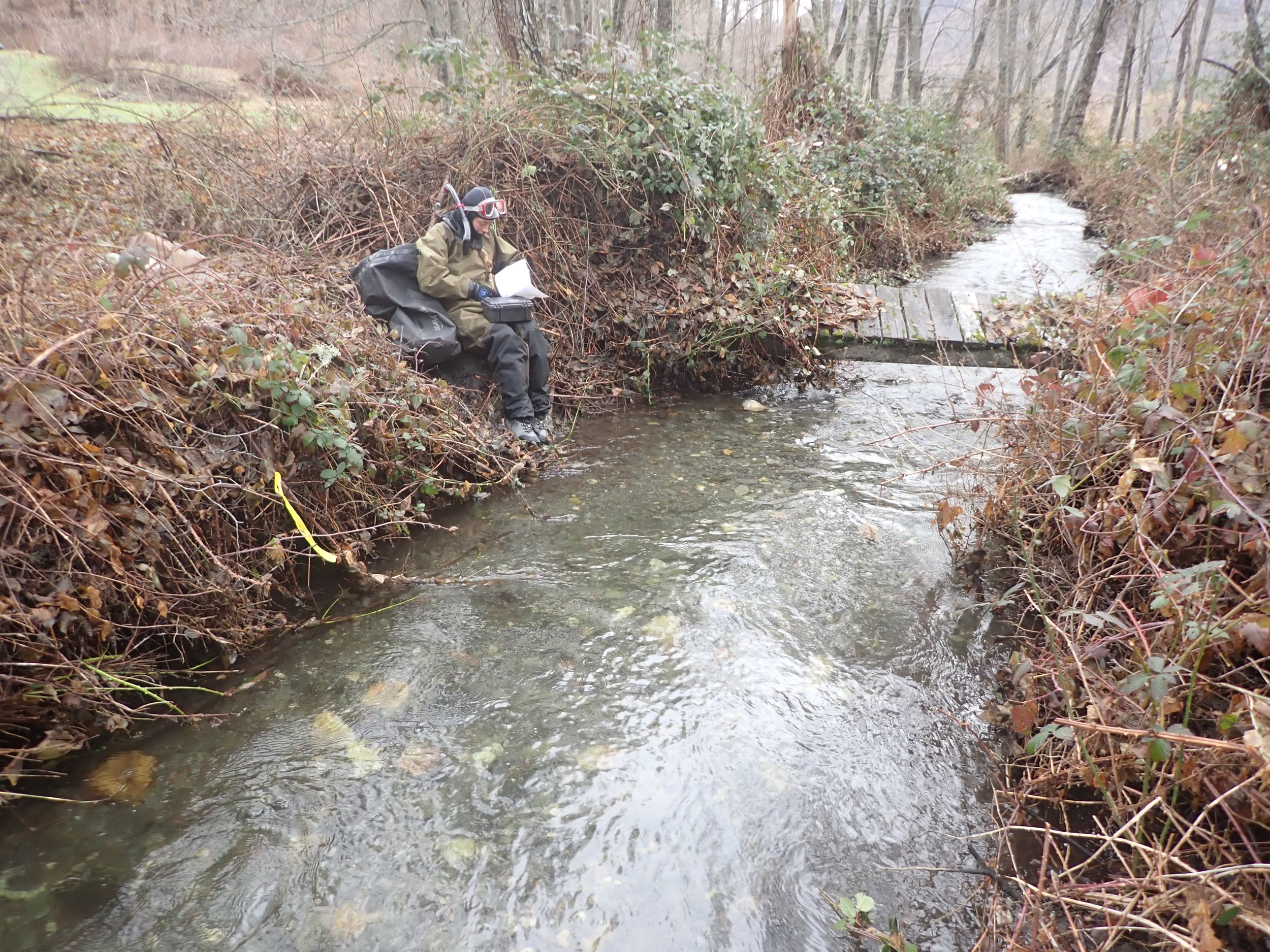
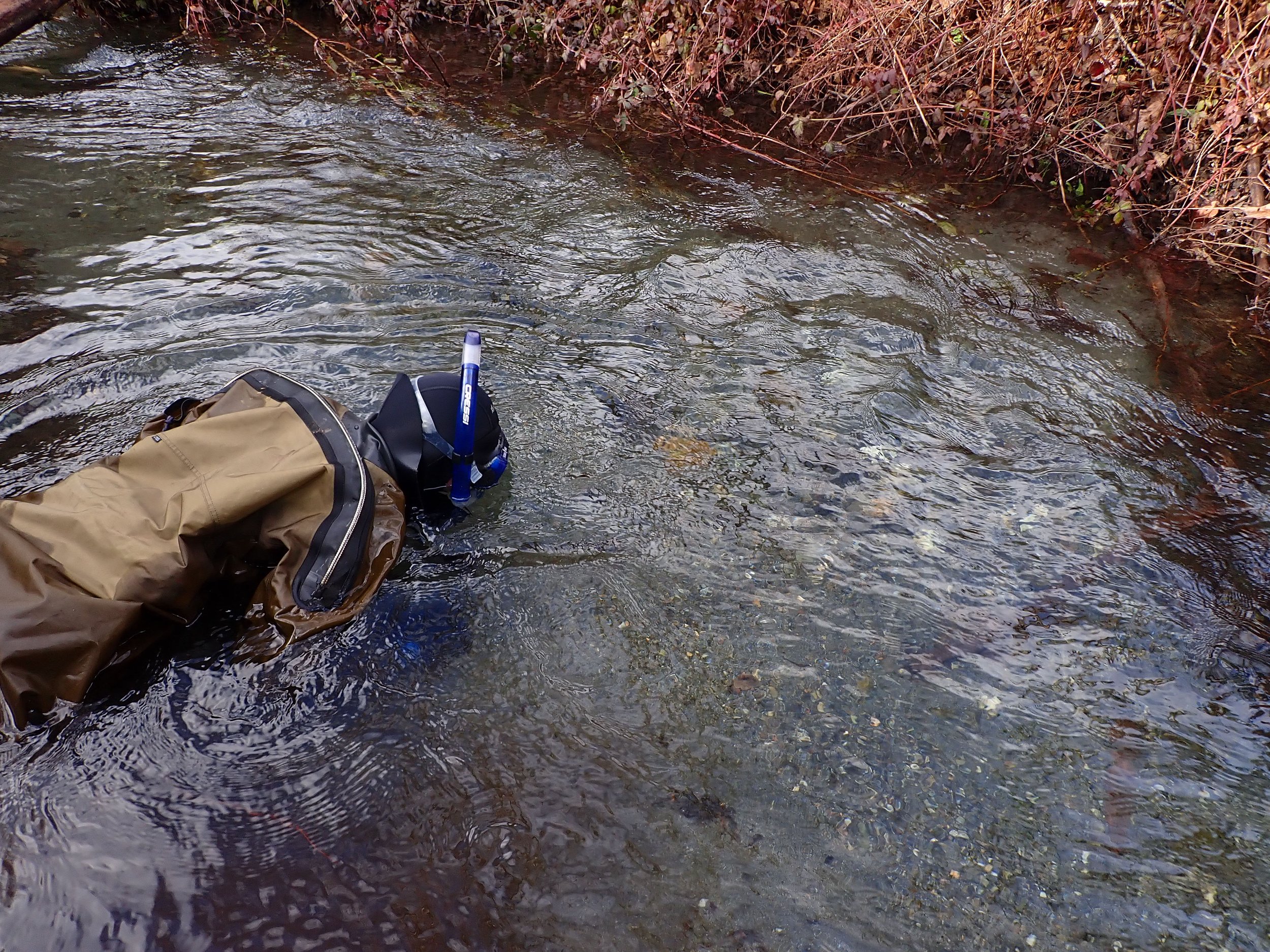
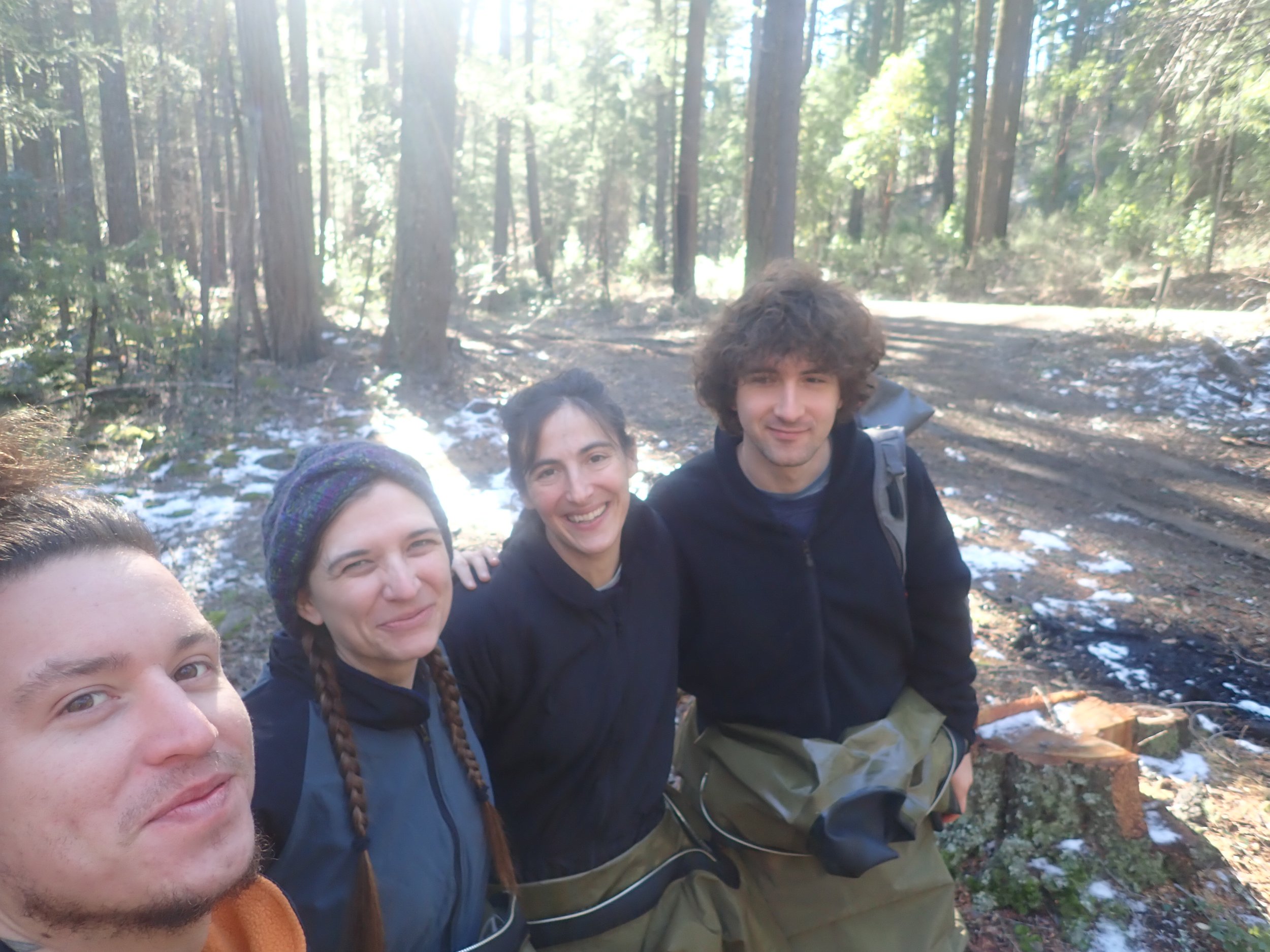
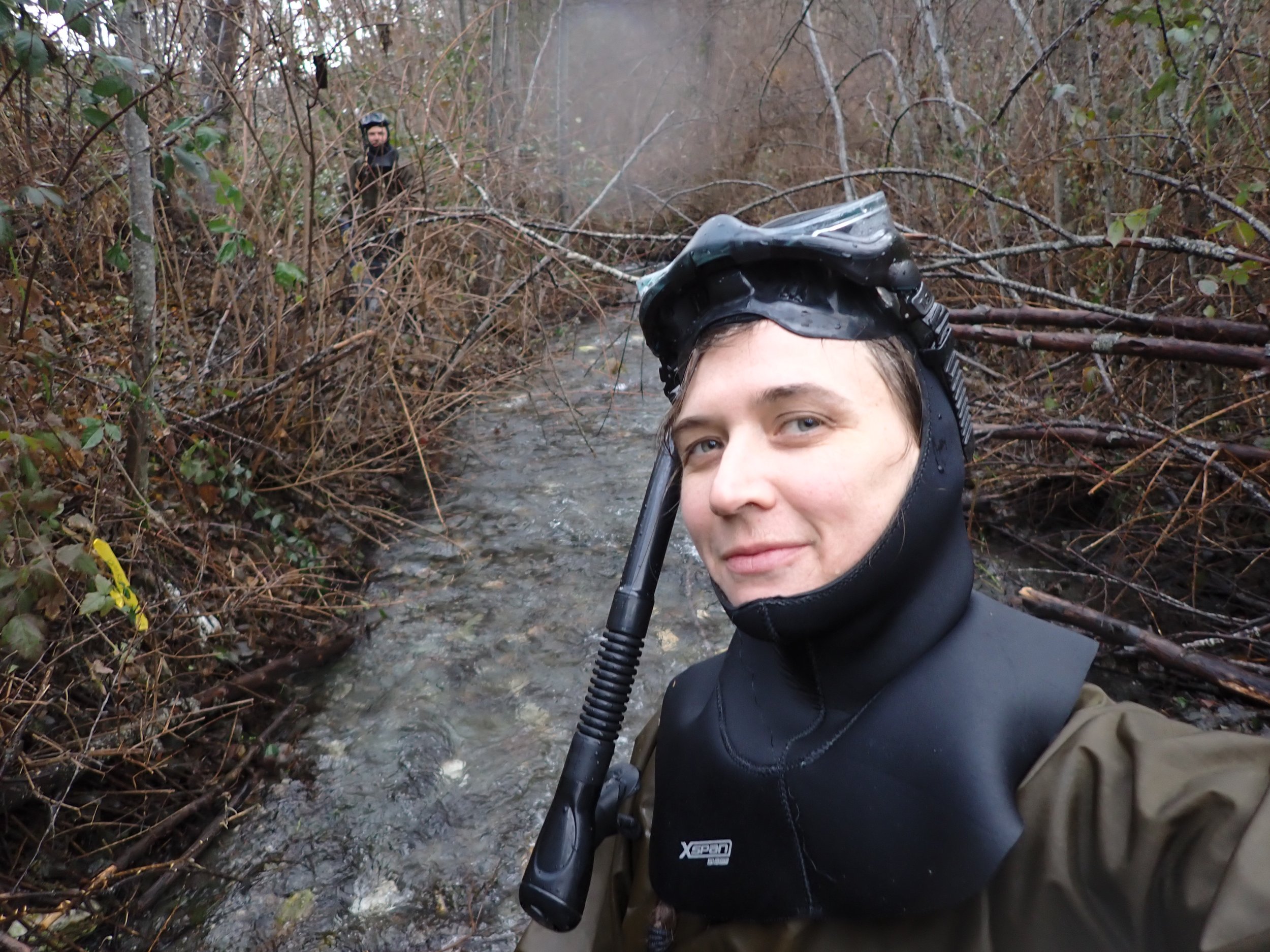
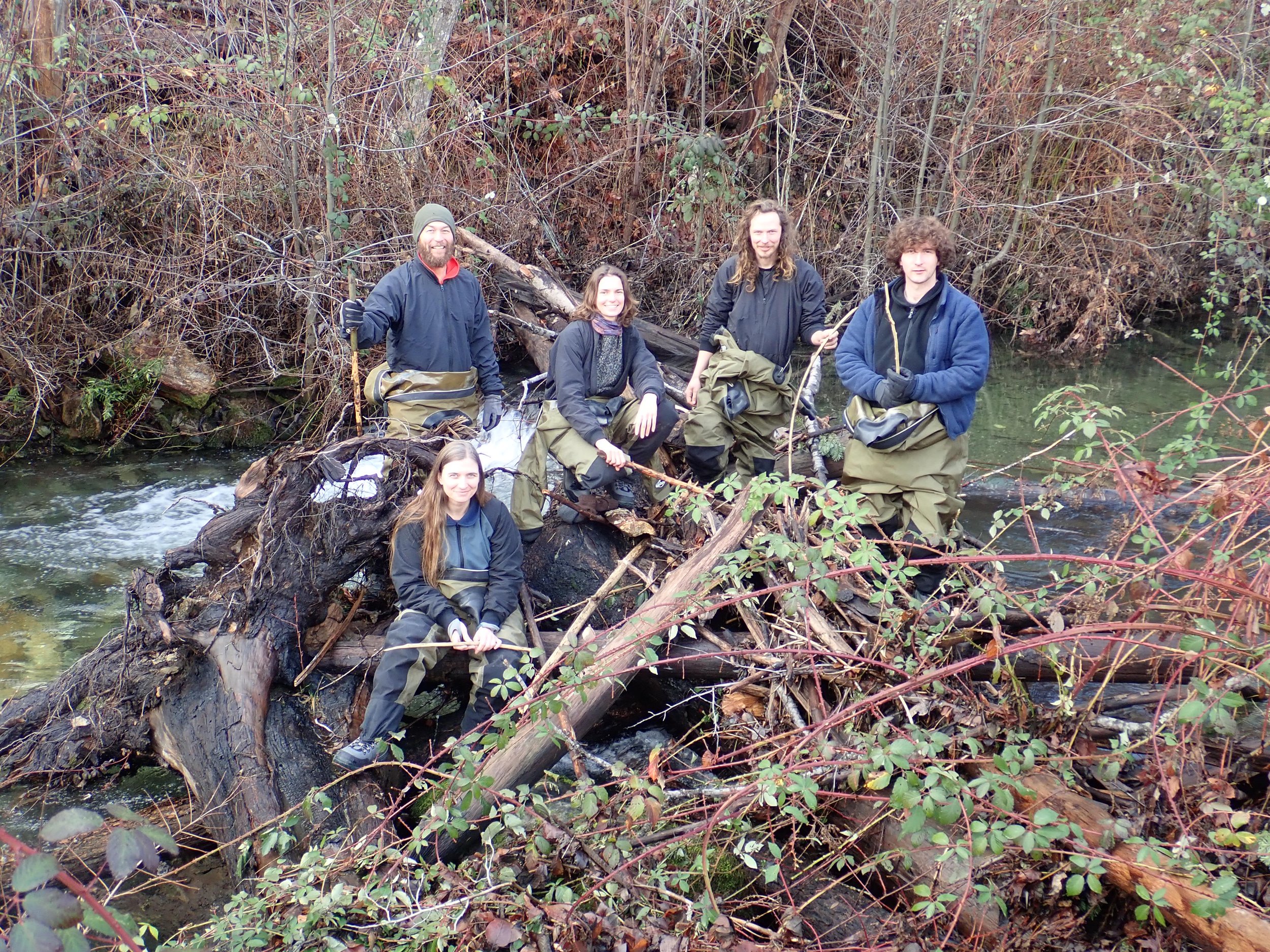
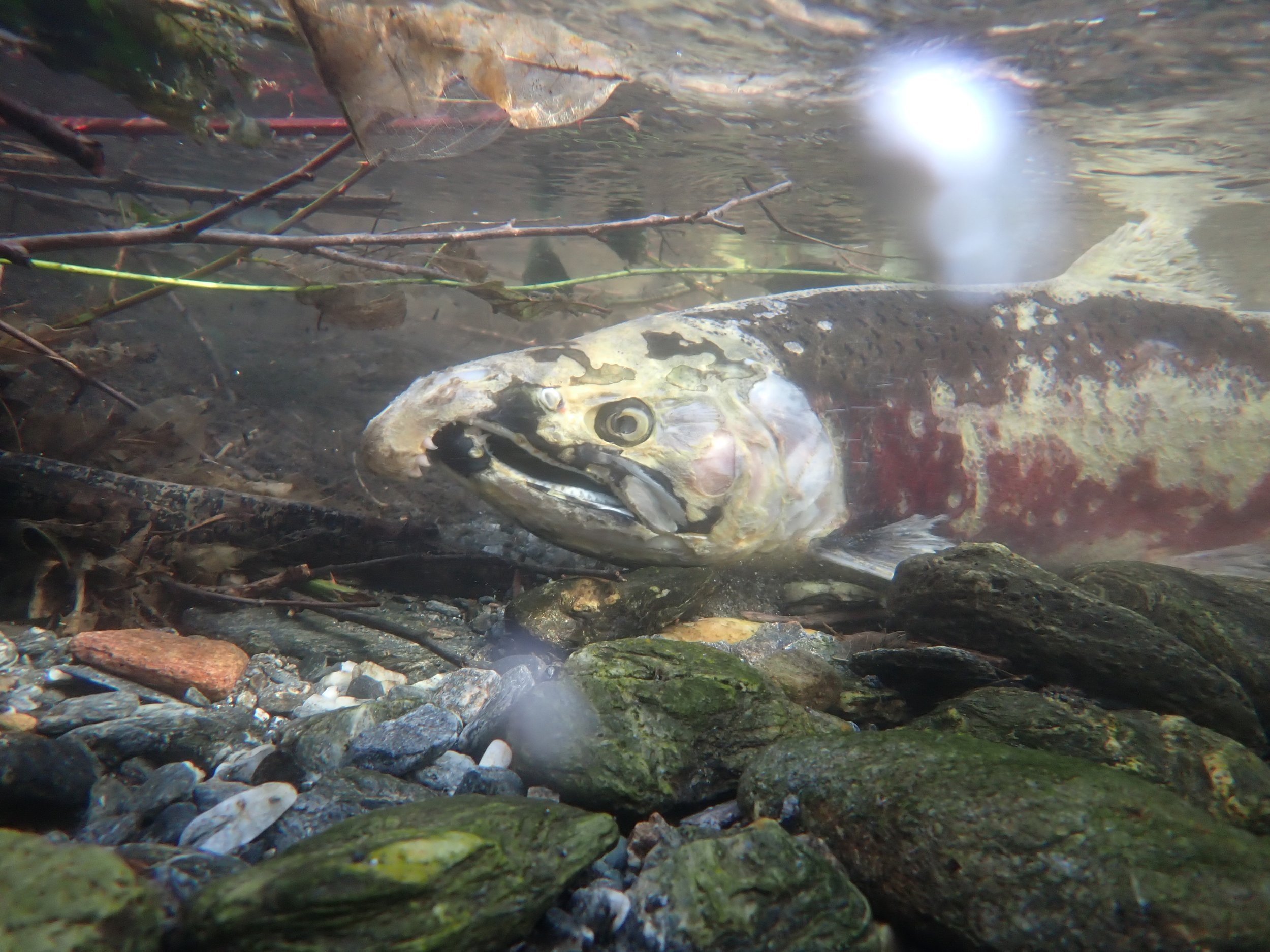
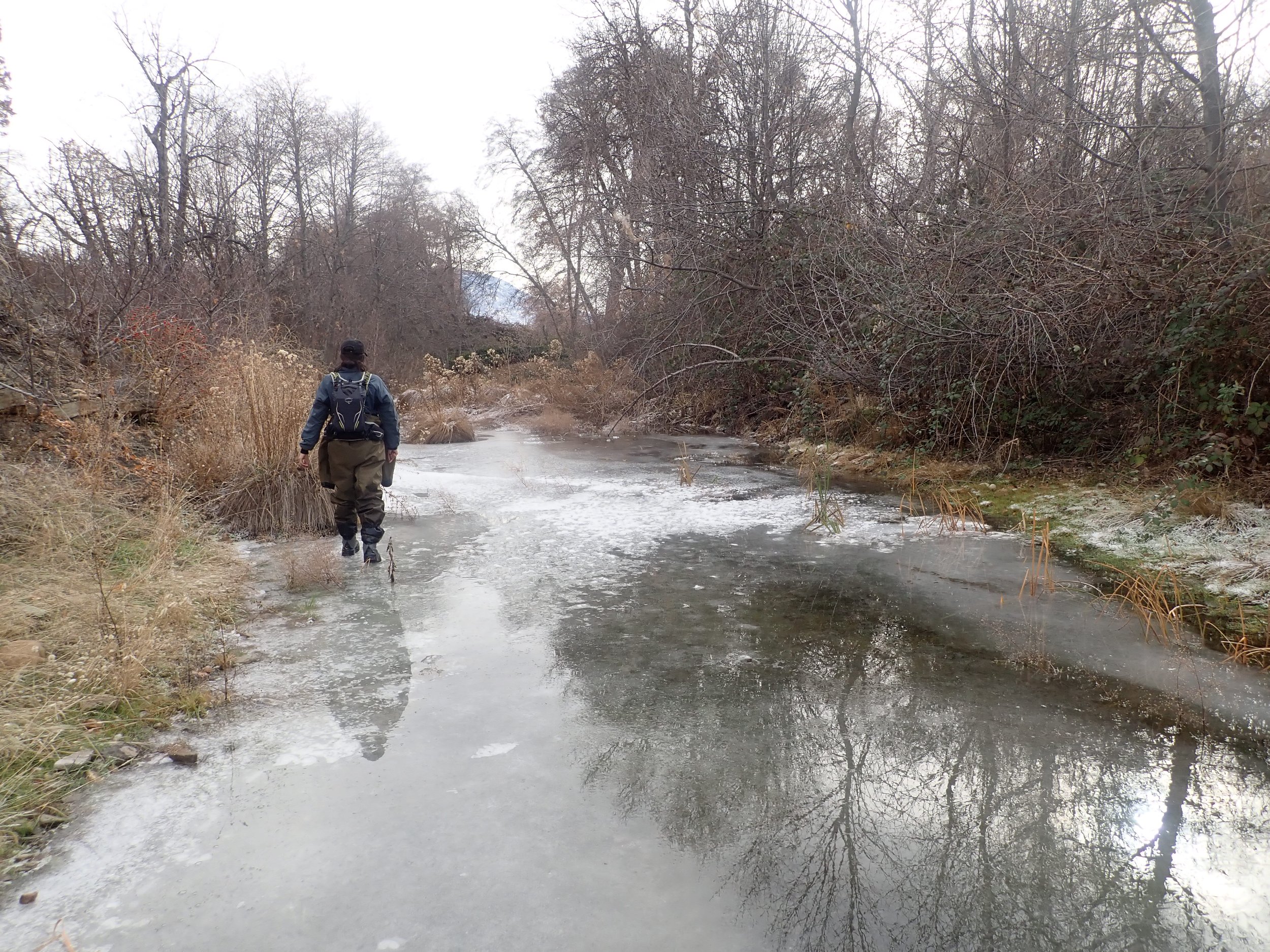
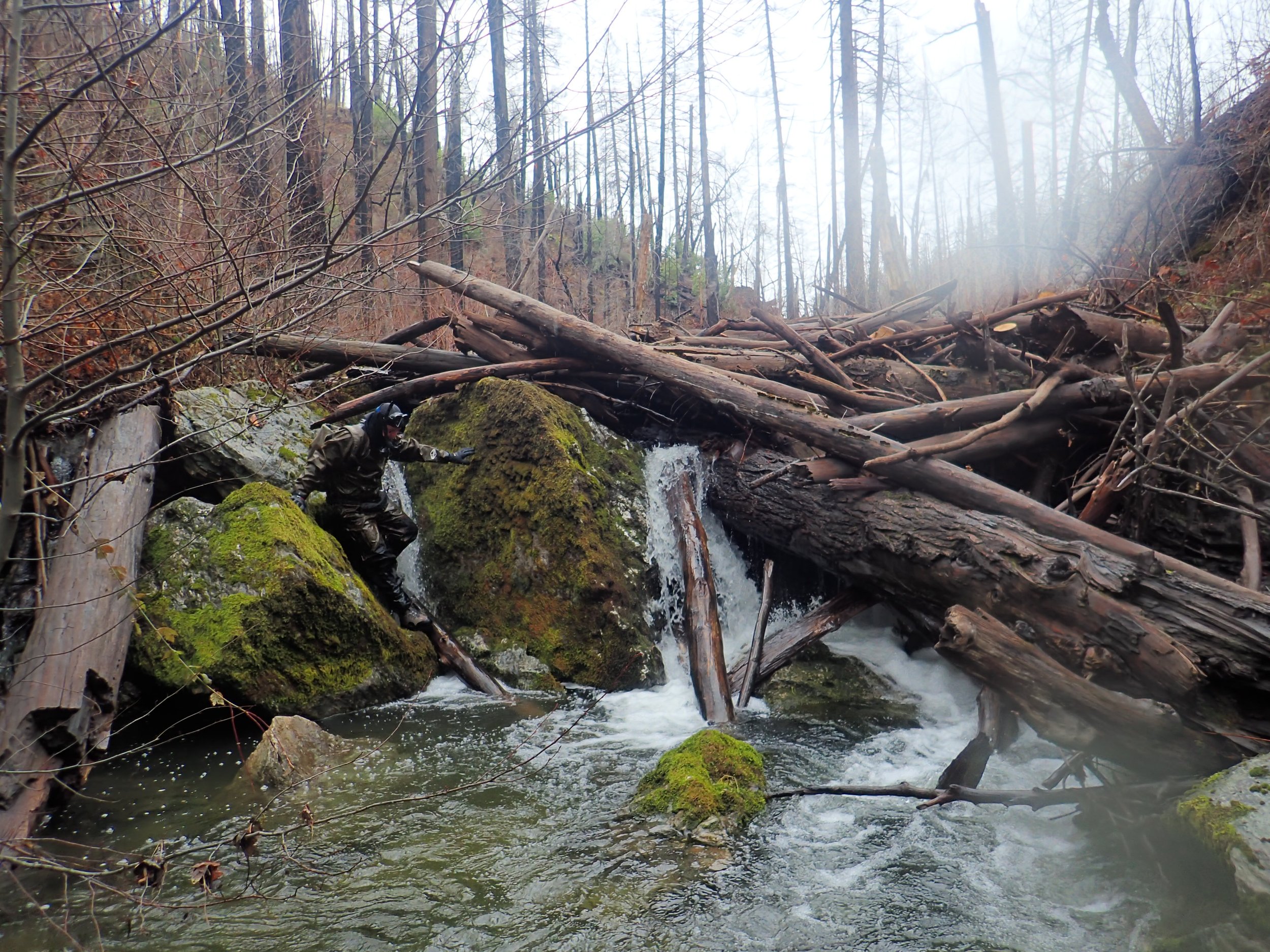
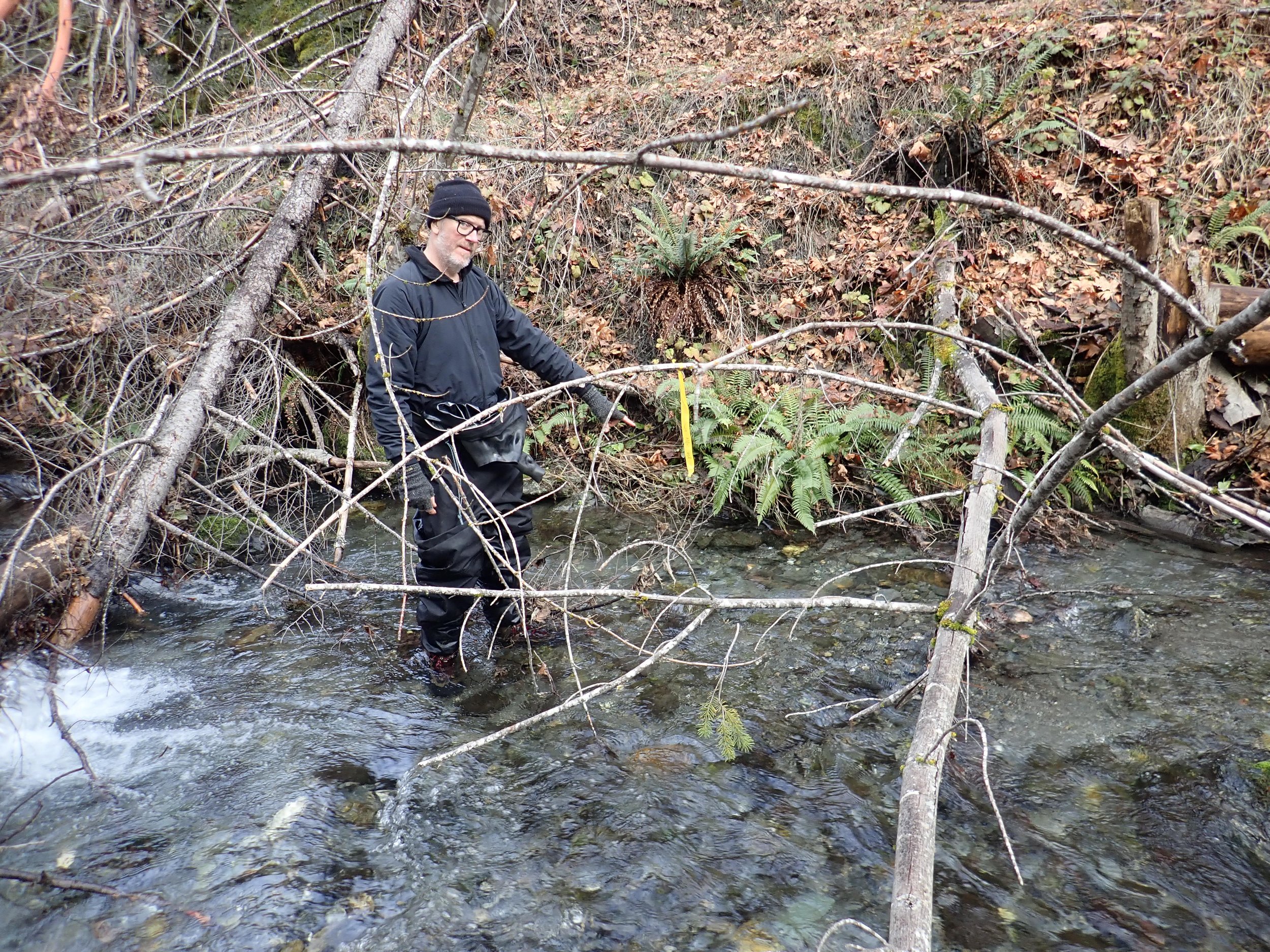
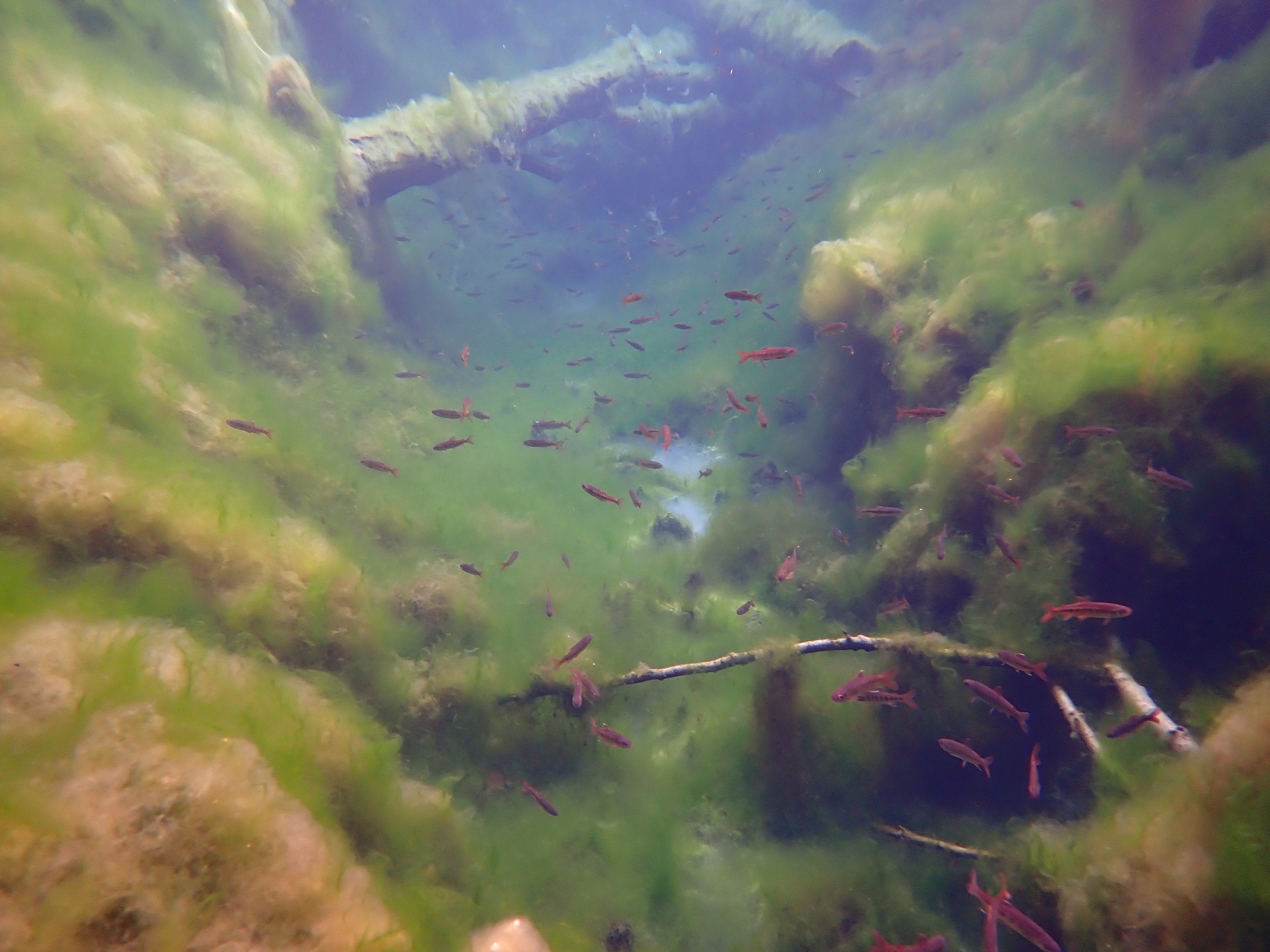
Many factors have to be considered when determining where, when, and how to survey. The crew must assess if flows are too low for spawning fish to be able to access, if they are too high for surveyors to safely navigate the stream, or if they are too turbid or muddy to allow visibility of fish and redds. High winds when winter weather systems are moving through can create a situation too hazardous for surveyors to work in and rockslides, fallen trees, snow, and ice on the roads can also keep crews from accessing the creeks. Each stream and reach has its own characteristics that also need to be factored in. Some have large wood structures or boulders that can make them more technically challenging to navigate. Others must be surveyed in an upstream direction in order to avoid having visibility obscured by the surveyor’s own movements kicking up sediment and muddying the waters. The aspect of certain streams can create a blinding glare on sunny days. Additionally, crew members must uphold respect for the many private landowners that live along the stream reaches being surveyed. All in all, however, through rain, snow, sleet, and ice, these dedicated fish folk make every effort to document the returning Coho salmon each winter as they complete their life cycle and begin the new one, as well as collect valuable data in the effort to help this threatened species survive and thrive.
Records of Coho spawning activity in the Mid Klamath have been maintained by MKWC and partners for over a decade and show a trend of increasing returns of spawning Coho adults during that time. This increase can be attributed in part to the agencies and crews gaining knowledge and understanding of where and how to conduct surveys effectively, but even more so we believe that we are seeing the positive results of restoration actions aimed at providing high quality adult spawning and juvenile rearing habitat for Coho salmon. For instance, MKWC, the Karuk Tribe, and other partners, have constructed several off-channel ponds adjacent to Middle Creek, a tributary to Horse Creek, over the past five years. Fisheries staff have documented record numbers of juvenile Coho rearing in these ponds since their construction and Coho crews identified a record count of over 100 redds in Middle Creek during the 2022/2023 survey season! In this Jefferson Public Radio interview, The ‘messy’ creek restoration that will help bring back salmon on the Klamath River, Karuk Tribe Fisheries Biologist Toz Soto, MKWC Fisheries Program Director Charles Wickman, and MKWC Fisheries Project Coordinator Mitzi Wickman discuss other examples of how Coho spawner survey results provide evidence of the success of fisheries restoration efforts in the Mid Klamath.
The 2022/23 Coho spawner survey crews are still hard at work out in the streams. Total redd counts for the 2022/23 season will be calculated in mid-February.
MKWC Surveyors
Rachel Krasner, Project Coordinator
Amanaka Yancey
Amber McVicar
Bryan Souza
Charles Wickman
Danny Davis
Devin Finegan
Dylan Fitzwater
Elben Andrews
Hollis Baldwin
Jimmy Peterson
Kai Crockett
Lauren Zygmont
Maya Williams
Sarah Prukop
Tai Kim
Will Harling


